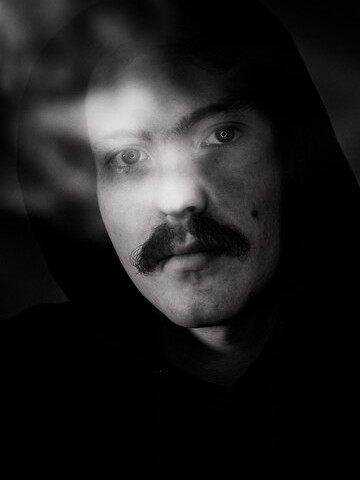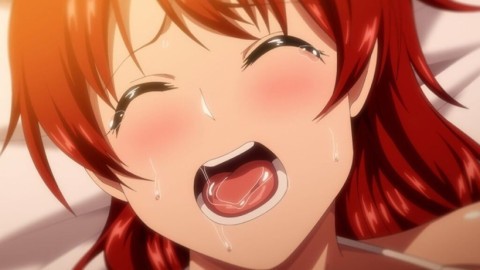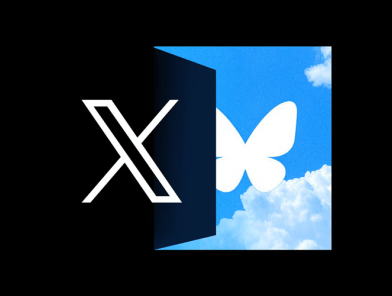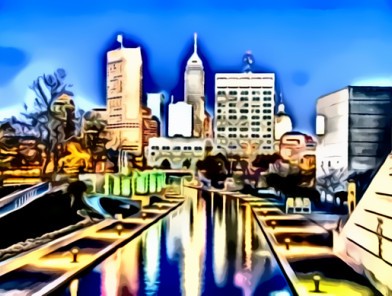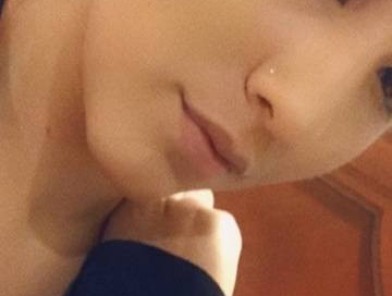If you want to understand modern hentai, ecchi, doujinshi or any adult-oriented Japanese art form, you have to forget the simplistic assumptions most people hold, and instead peel back the layers of history, culture, psychology, censorship, industry, and imagination that shape Japan’s relationship with erotic expression. The global perception of hentai tends to reduce it to shock value or fetish content, but within Japan it occupies a far more intricate position one that bridges tradition and modernity, repression and creativity, commerce and artistry. Its roots go back centuries, yet its evolution accelerated in the past few decades in ways that no other country has replicated.
This is the real story not of a genre, but of a cultural universe.
Where It All Began: Shunga, Fantasy, and the Seeds of Hentai
Japan’s erotic imagination didn’t emerge with animation. It emerged with ink, wood, and paper. During the Edo period, artists carved erotic scenes onto wooden printing blocks, creating detailed illustrations known as shunga. These weren’t considered deviant or underground; they were everyday objects found in merchant homes, samurai chambers, and bridal trousseaus. They depicted exaggerated bodies, humorous scenarios, and imaginative sexual interactions. Already, you can see the stylistic DNA of modern hentai playfulness, exaggeration, surreal proportions, and an emphasis on fantasy rather than realism.
This long-standing comfort with visual erotic storytelling meant that when manga and animation later appeared, erotic content found a natural home. But something else shaped hentai far more deeply: censorship.
How Censorship Accidentally Created Modern Hentai
When Japan modernized and adopted Western morality laws, explicit depictions of genitalia became illegal. However, fantasy creatures, stylized anatomy, and non-human forms were not. This loophole created an artistic pressure cooker artists had to innovate if they wanted to depict anything erotic.
You can’t draw realistic anatomy? Fine. Draw anatomy that only exists in imagination.
The government essentially encouraged artists to go beyond realism, and unintentionally helped create the aesthetic exaggeration that hentai is known for today. It was a paradoxical moment: the more the law tried to restrict erotic art, the more imaginative, fantastical, and experimental it became.
This historical tension restraint producing creativity still defines hentai today.
The Birth of a Term: How “Hentai” Became a Global Word
In Japanese, hentai doesn’t originally mean a genre. It means “abnormality,” “perversion,” or “pervert.” It’s not a word people use lightly. In Japan, calling someone hentai is calling them a creep. But Western fans adopted the term in the 1980s and 1990s, using it simply as shorthand for explicit anime.
Japan didn’t export the word Western otaku imported it, misunderstood it, and reinvented it.
Inside Japan, creators rarely call their own work “hentai.” Instead, they refer to it through more specific or softer genre names. But globally, the Western meaning has become dominant, so in this article we’ll use "hentai" the way most readers understand it explicit, drawn or animated sexual content.
And now we reach the heart of the topic: the genres themselves.
HENTAI (変態 / ヘンタイ): The Explicit Core Genre
Hentai, in the Western sense, refers to Japanese-style erotic animation and comics that contain explicit sexual content. But hentai is not a single genre it is a huge umbrella that contains countless artistic approaches, narrative styles, subcultures, and audiences. Understanding hentai means understanding how and why it grew.
Why Japan Embraced Explicit Animated Erotica
Three forces shaped hentai into a global phenomenon:
1. Artistic Freedom Through Stylization
Japanese animators have long believed that animation can express emotions and experiences that live-action cannot. When applied to adult content, this philosophy becomes even more powerful. Animation frees creators to depict:
-
psychological states through physical metaphor,
-
exaggerated expression for comedic or dramatic effect,
-
surreal or symbolic bodies that represent emotions rather than anatomy,
-
impossible scenarios that highlight fantasy rather than realism.
This artistic flexibility made hentai a playground where imagination outruns biology.
2. Cultural Privacy and the Separation of Public vs. Private Life
Japan is a society built on politeness and restraint. People avoid confrontation, minimize public emotion, and prioritize harmony. But private fantasy is free territory. Animation becomes a safe outlet anonymous, controlled, detached from real human bodies. Hentai thrives because it exists in the private sphere, where judgment fades.
3. The Otaku Economy and Technological Adaptation
Hentai studios were some of the earliest adopters of home video, computer graphics, and online distribution. When technology changed, hentai creators changed with it faster than the mainstream anime industry.
This adaptability made hentai extremely profitable.
The Subgenres Within Hentai
Hentai subdivides into hundreds of subgenres, but the key categories include:
-
Vanilla hentai: soft, romantic, relationship-focused stories with explicit scenes.
-
Fetish-specific hentai: exploring psychological or physical preferences.
-
Fantasy-based hentai: non-human forms, mythical beings, supernatural powers.
-
Parody hentai: erotic reinterpretations of existing characters (common in doujinshi).
-
Eroge-based hentai: adaptations of adult visual novels or games.
Each subgenre has its own artistic norms and cultural meaning, and many creators specialize in a single style for decades.
ECCHI (エッチ): The Playful, Suggestive Side of Japanese Erotica
If hentai is explicit, ecchi is the art of teasing. Its charm lies in tension, embarrassment, humor, and innuendo. Ecchi has shaped entire generations of anime, especially in the early 2000s, where shows embraced playful sexuality without explicit depiction.
The Cultural Function of Ecchi
Ecchi reflects a uniquely Japanese approach to eroticism: the idea that suggestion is more exciting than exposure. Japanese storytelling often favors subtle emotion over direct expression, and ecchi fits this tradition perfectly.
Characters reveal too much skin, get caught in accidental intimacy, or end up in ridiculous flirtatious situations but the line of explicit sexual acts is never crossed.
Ecchi as a Narrative Tool
Unlike hentai, which focuses primarily on sexual content, ecchi often uses sexuality to develop character relationships, build comedic tension, or shape group dynamics. Many series use ecchi as a narrative engine, creating:
-
comedic misunderstandings,
-
romantic jealousy,
-
dramatic tension,
-
character development through vulnerability.
Why Ecchi Became So Popular Globally
Western audiences discovered ecchi in mainstream anime long before they encountered hentai. Shows like Highschool DxD, To Love-Ru, and Highschool of the Dead became gateways to Japanese erotic humor. This global reach indirectly boosted hentai’s popularity, because ecchi made the style accessible without crossing into adult territory.
HENTAI MANGA (ヘンタイ漫画): The Printed Foundation of Erotic Imagination
If hentai anime is the spectacle, hentai manga is the foundation.
Why Hentai Manga Is So Important
Manga allows creators to work solo or in small teams, giving them far more creative control than animation studios. Many iconic hentai artists like ShindoL, Homunculus, Ishikei became famous not through animation but through manga.
Printed erotic comics have a huge advantage:
-
they’re cheaper to produce,
-
they allow more personal, psychological, and narrative experimentation,
-
artists can release new material weekly or monthly,
-
they can explore taboo subjects more freely.
Manga is where trends are born. Anime simply amplifies them.
HENTAI ANIME (ヘンタイアニメ): The Cinematic Expression
Hentai anime is often produced in short episodes (OVA format), adapted from manga or eroge games. Animation adds emotional depth through:
-
voice acting,
-
music,
-
movement,
-
pacing,
-
visual effects.
This transforms erotic scenes into emotional, sensory storytelling. Hentai anime often evolves slower than manga because it requires more budget and staff, but when a series succeeds, it creates enormous international impact.
DOUJINSHI (同人誌): The Underground Heartbeat of Erotic Creativity
Doujinshi is where erotic imagination is freest. Self-published, experimental, unrestricted by corporate editorial rules it’s where artists can draw anything they want, including erotic parodies of mainstream characters.
Why Doujinshi Matters Culturally
Doujinshi allows fans to reclaim ownership of stories they love. It’s fanfiction with illustrations, but elevated to a respected art form. Erotic doujinshi often becomes more popular than commercial releases. At Comiket, people line up for hours to buy limited-edition adult doujinshi from their favorite creators.
Doujinshi’s Influence on Hentai
Many professional hentai artists began as doujinshi creators. Doujin culture encourages experimentation with:
-
story structure,
-
erotic tropes,
-
stylistic exaggeration,
-
taboo exploration.
Because doujinshi is self-published, creators don’t answer to advertisers, publishers, or TV networks they answer only to imagination.
This freedom shaped the entire hentai industry.
WHY THE JAPANESE LOVE THESE GENRES A CULTURAL, PSYCHOLOGICAL, AND SOCIETAL DEEP DIVE
Japan’s erotic subcultures are not random. They emerge from uniquely Japanese conditions:
1. A long history of sexual imagery
Shunga normalized erotic art centuries prior.
2. A society that separates public morality from private fantasy
People follow strict social rules, but fantasy remains unlimited.
3. Creative storytelling rooted in exaggeration
Animation embraces surrealism; hentai takes it further.
4. Censorship that forces innovation instead of suppression
Restrictions encourage artistic loopholes and imaginative anatomy.
5. An otaku culture that values niche subgenres
Anime consumers love specialization and collectibility.
6. Loneliness and isolation in modern Japanese life
Parasocial intimacy and fantasy provide comfort.
7. Private consumption through technology
Hentai thrives because it is discreet and digital.
THE FINANCIAL SCALE OF HENTAI A GLOBAL GIANT
The hentai-related economy includes:
-
manga sales,
-
anime releases,
-
doujinshi events,
-
streaming platforms,
-
merchandise,
-
games,
-
subscription services,
-
overseas licensing.
Conservative estimates place the worldwide hentai market in the billions of dollars, rivaling entire sectors of mainstream entertainment. Japan exports not just animation but a cultural aesthetic that millions recognize instantly.
THE UNIVERSE OF HENTAI IS NOT JUST EROTICA IT IS CULTURE, HISTORY, IMAGINATION, AND INDUSTRY
Hentai isn’t a fringe product. It is the culmination of:
-
centuries of erotic art,
-
decades of manga innovation,
-
unique cultural psychology,
-
censorship-driven creativity,
-
the technological evolution of Japan.
Hentai, ecchi, doujinshi, hentai manga, and hentai anime form a living ecosystem with its own rules, aesthetics, communities, and economic power. They are as much a part of Japanese culture as samurai films, J-pop idols, or shrine festivals.
To understand hentai isn’t to understand pornography it is to understand how Japan imagines, dreams, rebels, and expresses desire through art.
